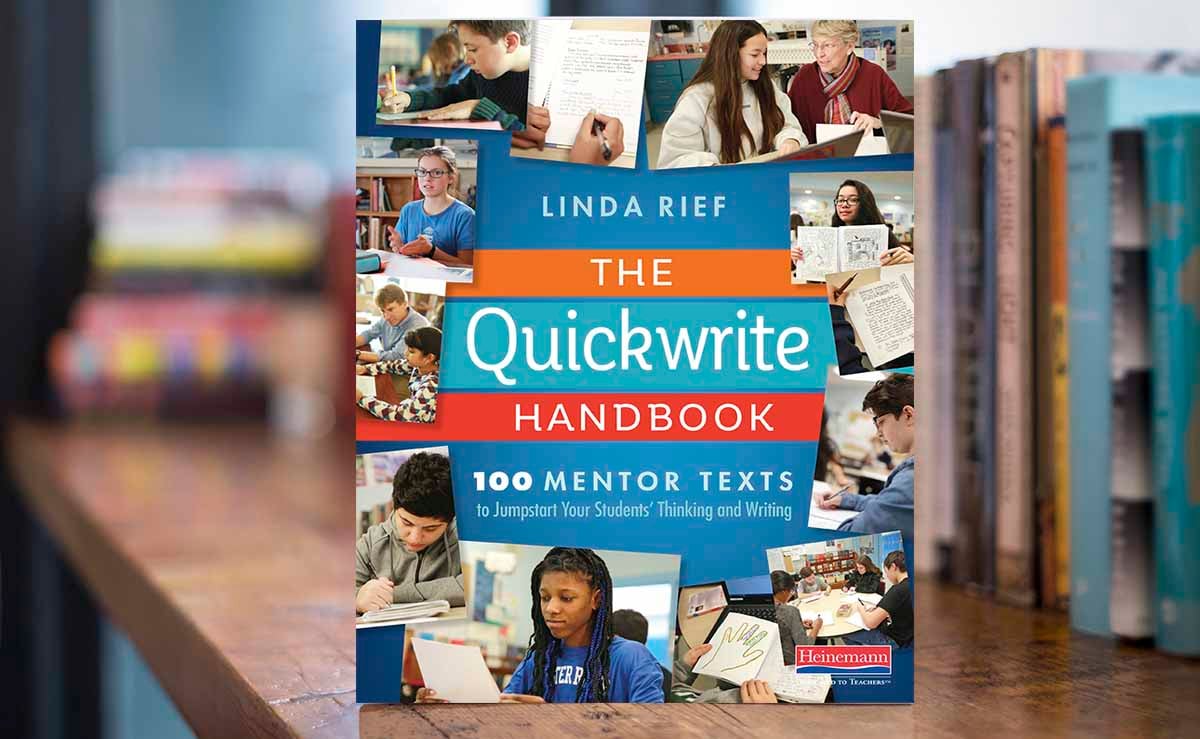 From The Quickwrite Handbook: 100 Mentor Texts to Jumpstart Your Students, Thinking and Writing by Linda Rief
From The Quickwrite Handbook: 100 Mentor Texts to Jumpstart Your Students, Thinking and Writing by Linda Rief
Writing and teaching writing can be intimidating. It is hard work, and it takes time. Quickwrites offer an easy and manageable writing experience that helps both students and teachers find their voices and develop their confidence, as they discover they have important things to say. This quick exercise pulls words out of the writer's mind. I am always surprised at the precision of language, level of depth and detail, and clarity of focus I hear when a student reads a three-minute quickwrite out loud. When the models for quickwrites are compelling and carefully chosen, students are able to focus closely and write clearly.
What Is a Quickwrite?
A quickwrite is a first draft response to a short piece of writing, usually no more than one page of poetry or a short picture book, but differs from prompts and freewrites.
Quickwrites allow us to write fast without censoring — it's what the subconscious allows us to say. We are surprised to realize we didn't know we knew what we knew until we wrote it down. With quickwrites, we are asking students to grope and trip their way into finding what really matters to them.
To do a quickwrite, students and teacher write for two or three minutes off a found idea or borrowed line from a text, responding to something that sparks a reaction in the mind of the reader/listener. This process helps writers generate ideas and get words on paper. When students do a quickwrite, ask them to do the following:
- Write as quickly as they can for two or three minutes, capturing anything that comes to mind in response to the work as a whole.
- Borrow a line or part of a line (one of their own choosing or a particular line that might you might suggest) from the work and write off, or from, that line nonstop for two or three minutes.
- Use a specific line or particular style as a model from which to write.
We can't work in a void, and neither can students. Once students have words on paper, we can help them develop those thoughts into effective, compelling pieces of writing. Quickwrites help all of us get out of the void. The main purpose of doing a quickwrite is simply to get words and ideas on paper.
•••
To learn more about The Quickwrite Handbook and place a pre-order, visit Heinemann.com

 Linda Rief teaches middle school in Durham, New Hampshire and is an instructor in the University of New Hampshire’s Summer Literacy Institute. A national and international presenter on issues of adolescent literacy, she is also a recipient of NCTE’s Edwin A. Hoey Award for Outstanding Middle School Educator in the English Language Arts.
Linda Rief teaches middle school in Durham, New Hampshire and is an instructor in the University of New Hampshire’s Summer Literacy Institute. A national and international presenter on issues of adolescent literacy, she is also a recipient of NCTE’s Edwin A. Hoey Award for Outstanding Middle School Educator in the English Language Arts.
Her newest book is The Quickwrite Handbook: 100 Mentor Texts to Jumpstart Your Students' Thinking and Writing. She is also the author or coeditor of many Heinemann titles, including Read Write Teach, Inside the Writer's-Reader's Notebook, The Writer's-Reader's Notebook, Adolescent Literacy, Vision and Voice, and Seeking Diversity.
Follow Linda on Twitter @LindaMRief.



